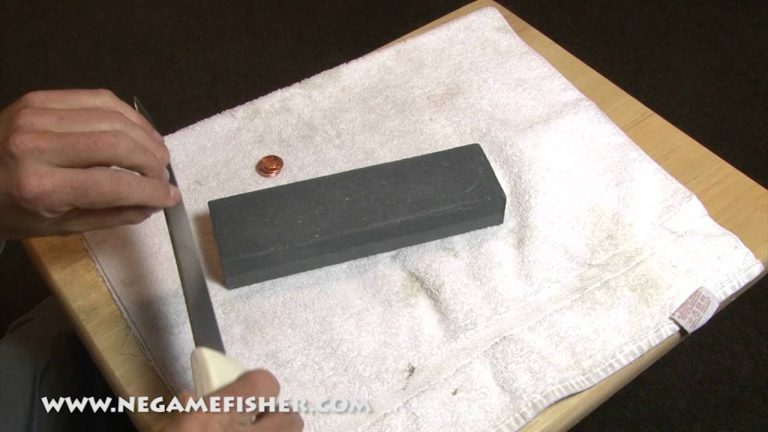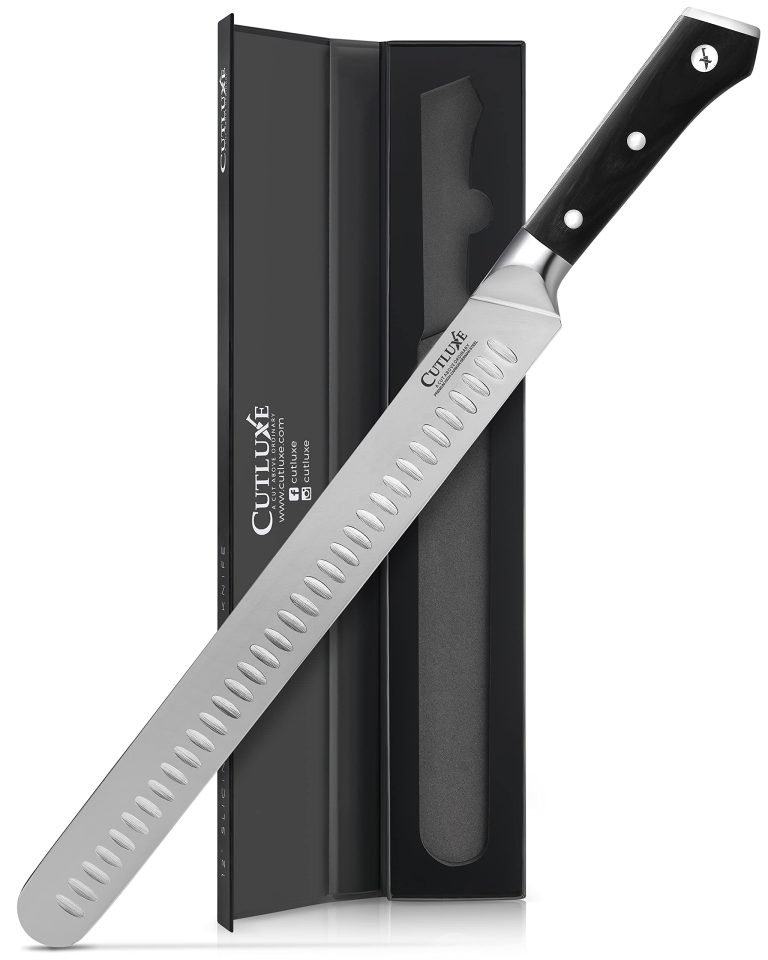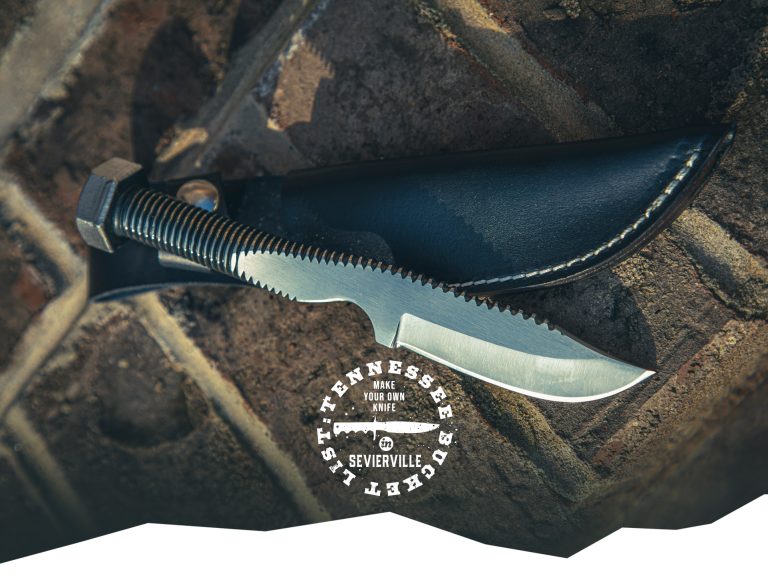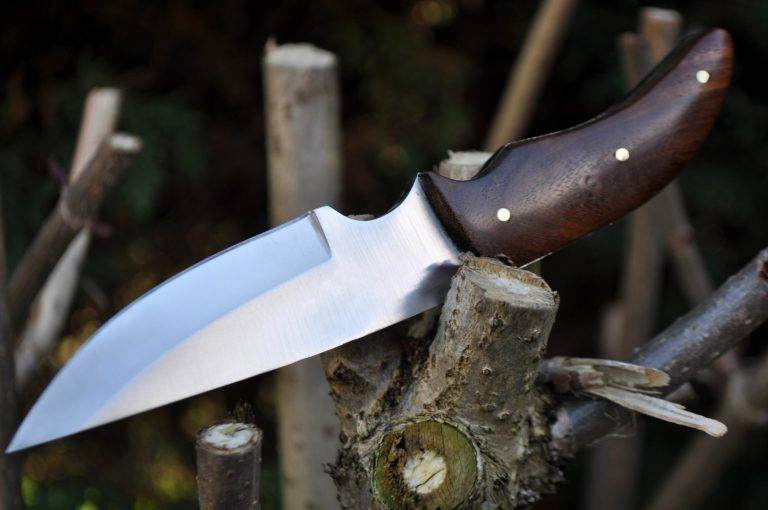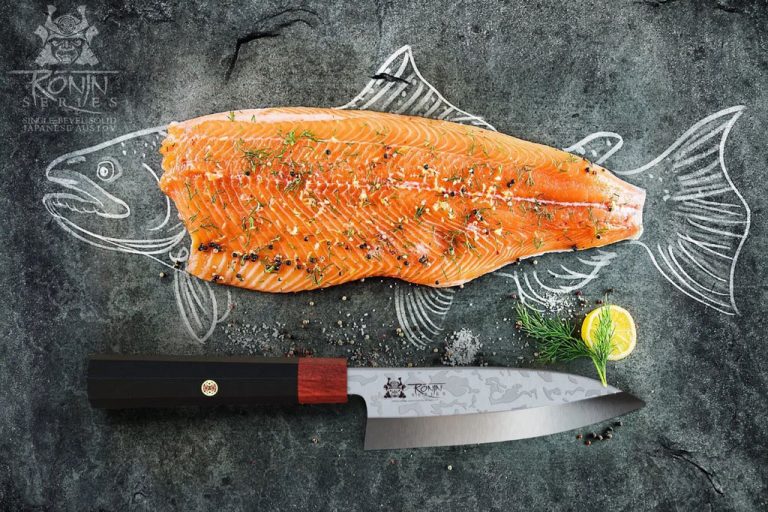Serrated Knife: Slice Through Anything with Precision
A serrated knife is a type of knife with a jagged or saw-like edge, often used for slicing through foods with a hard exterior and soft interior like bread or tomatoes. When it comes to slicing food with precision and ease, a serrated knife is an essential kitchen tool.
The jagged or saw-like edge of a serrated knife enables it to cut through tough exteriors, such as the crust of a loaf of bread or the skin of a tomato, while maintaining the integrity of the soft interior. Unlike straight-edged knives, serrated knives require less force, allowing for cleaner and more efficient cuts.
Whether you’re a professional chef or a home cook, having a high-quality serrated knife in your culinary arsenal can greatly enhance your ability to prepare meals with accuracy and finesse.

Credit: www.amazon.com
The Versatility Of A Serrated Knife
The versatility of a serrated knife makes it an essential tool in any kitchen. With its unique blade design, it can be used for a wide range of tasks. Serrated knives excel at **slicing through tough and soft materials** alike. Whether it’s cutting through crusty bread or juicy tomatoes, a serrated knife offers exceptional precision and control. The serrated edge allows for a sawing motion, enabling smooth cuts without squishing or tearing delicate food items. In addition to the kitchen, serrated knives are also handy for outdoor activities like camping and hiking. They are perfect for slicing ropes or branches, making them a versatile tool for the adventurous. With their durability and functionality, these knives are a must-have in any kitchen or outdoor toolbox.
Choosing The Right Serrated Knife For Your Needs
Choosing the Right Serrated Knife for Your Needs
When choosing a serrated knife, it’s important to consider various factors to ensure it meets your needs. The first factor to consider is the blade type and design, as this will determine its performance for different cutting tasks. There are various blade types available, including scalloped, sawtooth, and wavy edge. Each blade type has its own advantages and is suitable for specific cutting tasks, such as slicing bread, tomatoes, or meats.
Another important factor to consider is the handle material and ergonomics. The handle should be comfortable to hold and provide a secure grip for safe and efficient cutting. Common handle materials include wood, plastic, and rubber. It’s important to choose a handle material that suits your preferences and provides the necessary grip and control.
Caring For Your Serrated Knife: Maintenance And Sharpening
Caring for your serrated knife is essential to ensure its longevity and optimal performance. Proper cleaning and storage play a crucial role in maintaining the knife’s sharpness and preventing any damage. After each use, make sure to wash the knife with warm water and mild soap, gently removing any food residue without using abrasive materials that can harm the blade. Pat it dry and store it in a knife block or a protective sheath to avoid any accidents or dulling.
When it comes to sharpening your serrated knife, there are a few methods you can consider. One option is using a serrated knife sharpener specifically designed for these types of blades. Another alternative is a honing rod with a diamond-coated surface, effectively sharpening the individual serrations.
While some prefer professional sharpening services for their serrated knives, many DIY enthusiasts opt for their own techniques. It’s important to note that DIY methods require caution and precision to avoid damaging the blade. You can use a fine ceramic rod or a sharpening stone to gently work on each serration, following the angle of the serrations. Remember to test the blade’s sharpness after sharpening and make any necessary adjustments accordingly.
Tips And Techniques For Safe And Effective Serrated Knife Usage
|
Tips and Techniques for Safe and Effective Serrated Knife Usage
Holding and gripping techniques for optimal control:
|
Serrated Knife Vs. Straight-Edged Knife: Which Is Better?
Serrated knives and straight-edged knives each have their own unique benefits and drawbacks. The serrated knife is known for its ability to easily cut through foods with tough exteriors and soft interiors, such as bread and tomatoes. The saw-like teeth on the blade help to grip the food and provide a clean cut without squishing or tearing. However, serrated knives may not be as versatile as straight-edged knives when it comes to performing delicate precision cuts.
On the other hand, straight-edged knives offer more control and precision for tasks like slicing, dicing, and chopping. Their sharp, smooth blades allow for clean, precise cuts on a variety of ingredients. Straight-edged knives are often the go-to choice for professional chefs who need a versatile tool in the kitchen. However, they may struggle with cutting through tougher foods or items with a hard exterior.
The benefits and drawbacks of serrated knives
Serrated knives excel at cutting through tough exteriors and soft interiors, making them ideal for tasks like slicing bread or slicing through juicy tomatoes without crushing them. However, the saw-like teeth on the blade can make them less versatile for other types of cuts or tasks that require precision. Serrated knives are also more difficult to resharpen compared to straight-edged knives. Additionally, the teeth can make it harder to clean the blade thoroughly, leading to a potential buildup of food debris.
Comparing cutting performance and versatility
The cutting performance of serrated knives is exceptional when it comes to certain foods, but they may struggle with precision cuts or tasks beyond their specific design. Straight-edged knives offer greater versatility and control, allowing for a wider range of cutting techniques and tasks. They are particularly useful for tasks requiring precision and accuracy, such as julienning vegetables or creating fine slices. However, straight-edged knives may not be as effective when it comes to cutting through tough-skinned fruits or vegetables, as they may slide or squish the produce.
Choosing the right knife for different food preparation tasks
When selecting a knife for different food preparation tasks, it’s important to consider the specific requirements of the task at hand. Serrated knives are perfect for cutting through tough exteriors and delicate interiors, while straight-edged knives excel at precision cuts and versatile tasks. It’s often practical to have both types of knives in your kitchen to ensure you have the right tool for every job. By understanding the benefits and drawbacks of serrated knives and straight-edged knives, you can make an informed decision based on your specific needs and preferences, allowing you to achieve optimal results in the kitchen.
Innovative Uses Of Serrated Knives In The Culinary World
Innovative Uses of Serrated Knives in the Culinary World
Serrated knives are not just limited to cutting bread anymore. Chefs around the world have discovered creative cutting techniques that make use of the unique blade design of serrated knives. These knives are not only ideal for slicing through crusty loaves of bread, but they excel at tackling various types of food with tough exteriors and soft interiors.
One exciting aspect of serrated knives is their ability to unlock unique recipes. From effortlessly slicing delicate tomatoes to carving juicy watermelons, a serrated knife proves to be a versatile tool in the kitchen. Its jagged edge helps maintain the structural integrity of fruits and vegetables while effectively slicing through their skin.
Renowned chefs and kitchens have vouched for the effectiveness of serrated knives. They appreciate how serrated blades provide precision and control when tackling delicate ingredients. The serrations prevent squishing, tearing, or crushing delicate foods, resulting in clean and professional cuts.
Serrated Knives For Outdoor Activities And Survival
| Serrated Knives for Outdoor Activities and Survival |
| Serrated knives are essential tools for outdoor enthusiasts, particularly when it comes to camping, hiking, and survival situations. These knives are designed with a jagged edge that excels at cutting through ropes, fabric, and other outdoor materials, providing a reliable and efficient option for various tasks. Whether you are setting up a campsite, navigating through dense vegetation, or dealing with emergency situations, a serrated knife can make a significant difference in your outdoor experience. |
| When it comes to outdoor activities, having the right tools is crucial. Serrated knives offer exceptional cutting power, allowing you to effortlessly slice through ropes and cords that hold up your shelter or secure your gear. The jagged teeth on the blade grip the material, preventing slips and ensuring a clean cut. This feature is especially valuable during emergencies when time is of the essence. Moreover, serrated knives are versatile and can be used for various tasks such as preparing food, whittling wood, or even self-defense if necessary. |
| There are numerous must-have serrated knives available for outdoor enthusiasts. The Brand X Outdoor Survival Knife is a popular choice due to its durable construction, razor-sharp serrated blade, and ergonomic handle for a secure grip. It is designed to withstand tough conditions and can handle the rigors of outdoor adventures. Additionally, the Brand Y Camping Knife offers a compact and lightweight design, making it easy to carry during hikes or explorations. Its serrated edge ensures precise and effortless cutting, ideal for survival situations. |
Conclusion
To sum up, the serrated knife is an essential tool that every kitchen must have. Its unique toothlike edge allows for effortless cutting through tough surfaces like bread and tomatoes. Not only does it offer precision, but it also prevents delicate items from squishing or tearing.
The serrations create friction, enabling the knife to smoothly glide through the food rather than exerting excessive pressure. With a serrated knife in your kitchen, you can say goodbye to crumbling cakes and uneven slices. It’s versatile too, capable of handling a wide range of tasks with ease.
Whether it’s cutting through soft fruits or slicing through crusty baguettes, the serrated knife is well-suited for various cutting needs. So, invest in a high-quality serrated knife today and experience the joy of effortless slicing in your culinary endeavors.

